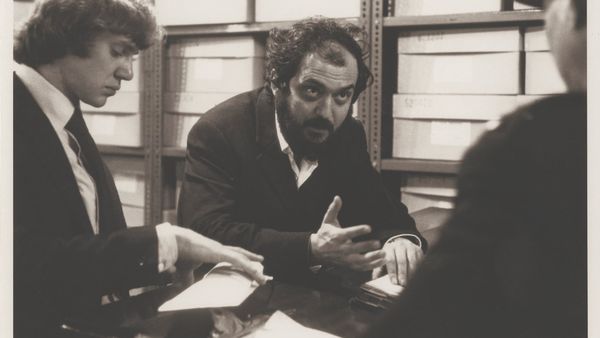 |
| Malcolm McDowell (A Clockwork Orange) with Stanley Kubrick in Gregory Monro’s Tribeca Film Festival highlight Kubrick by Kubrick |
In the first instalment of my conversation on Tribeca Film Festival highlight Kubrick By Kubrick with director Gregory Monro, we discussed Stanley Kubrick’s thoughts as a room and the rarity of hearing his voice in the recorded taped interviews by Michel Ciment. Malcolm McDowell (A Clockwork Orange) saying “John Wayne is more violent”, Marisa Berenson (Barry Lyndon), and Sterling Hayden (The Killing and Dr. Strangelove Or: How I Learned To Stop Worrying And Love The Bomb), Kubrick’s longtime association with Leon Vitali, the mystery of 2001: A Space Odyssey, and The Shining also came up. I noted two other Tribeca highlights - Pan Nalin’s Last Film Show, where he references Kubrick and Douglas Tirola’s use of a Look magazine photo taken by Kubrick for his documentary on Leonard Bernstein, Bernstein’s Wall.
 |
| Gregory Monro with Anne-Katrin Titze: “They are very rare interviews. Sterling Hayden, Marisa Berenson, I have never seen them before.” |
From Paris, Gregory Monro joined me on Zoom for an in-depth conversation on Stanley Kubrick and his latest documentary Kubrick By Kubrick.
Anne-Katrin Titze: Hi Greg!
Gregory Monro: Hello, how are you, Anne-Katrin!
AKT: You are editing your latest film. What are you working on?
GM: Yes, a movie on Rosa Bonheur, the French painter from the 19th century.
AKT: You start your Kubrick By Kubrick with The Blue Danube Waltz. You couldn’t resist?
GM: No, I couldn’t, of course. Well it was space, maybe the only place in the universe where there are no problems. So I wanted to set up the space at the beginning, peaceful, no war, no pandemic. Yeah, I couldn’t resist. It’s so beautiful. It’s more for the music than for the visual, but it had to be logical with what I wanted to set up in the beginning of the movie, you know, with that secret and mysterious room somewhere in space. Which I set up, of course, with the interviews of Kubrick.
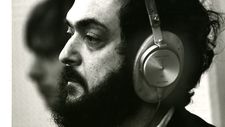 |
| Gregory Monro on Kubrick by Kubrick: “This is the only movie where you have Stanley Kubrick actually talking about his movies.” |
AKT: The secret room is your little dollhouse, right? And you added things like the orange swirly carpet from The Shining and all these other elements one by one. How did you come up with the idea to combine the dollhouse setting with the Michel Ciment interviews?
GM: First off, it wasn’t a dollhouse. It wasn’t small at all, it was one third of the original room and there were parts of it we shot at the normal scale. Some corners with the TV had to be really big, so it was much bigger than some people think, actually. It’s very difficult to build a film upon exclusively audio archives. And I had to find a way to link everything and to direct these audiotapes. I had to find a way to make it visual and logical with Kubrick and what he was saying.
I had the idea really early on of that mysterious room. It still remains a mystery today in 2001: [A Space Odyssey], with the meaning of that room. It’s very secret and mysterious, we don’t know where it is. I had the idea to symbolize that room throughout Stanley Kubrick’s thoughts. It’s very symbolic, we don’t say it in the movie. The idea was to link all the conversations and the Kubrick atmosphere and Kubrick’s thoughts and films into that room with the audiotape. I could have done it with only photographs but it would have been difficult.
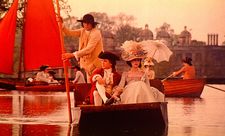 |
| Ryan O'Neal and Marisa Berenson in Barry Lyndon |
AKT: I like the room, also room 237 and the room changing, the space in his head changing over time. I’m sure I’m not the only one who was surprised by how young his voice sounds.
GM: Yes, absolutely. And how soft and how gentle and how humble. It was the purpose of my documentary, because there’s been a lot of films on Stanley Kubrick before mine. I didn’t intend the film to reveal something or add information, because one mustn’t forget that it’s an adaptation of Michel Ciment’s interviews, which were transcribed via these audiotapes into a book.
A lot of people actually paraphrased it, too. They repeated what Kubrick said and were analysing that. So people said “We don’t learn anything.” But in all the other movies you had people talking for Kubrick and saying what he said. This is the only movie where you have Stanley Kubrick actually talking about his movies. So the purpose is not adding information, but the rare voice that we hear. It adds, and that was my goal, a human face to Stanley Kubrick. It humanizes him through his voice.
AKT: It reminded me of when I did an interview with Leon Vitali …
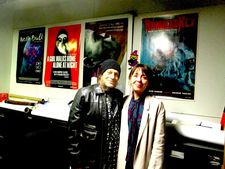 |
| Leon Vitali with Anne-Katrin Titze in New York on Stanley Kubrick: “He was nuts for animals.” Photo: David Ninh |
GM: Yes, yes, yes.
AKT: And we were talking about Stanley Kubrick and animals. He said Kubrick was nuts about animals, he loved animals. In your film there is also a mention of him staying in his house with his wife, his daughters, his dogs, and his cats. The voice gives us a bit of that, Kubrick who loved animals because they are without guile.
GM: You know, he was a normal guy, he was a casual guy. He was surely tough at work, but he was a simple man. It’s like having a nice talk and having thoughts about movies and, I would say, humanity.
AKT: I also liked how you included archival interviews with some of his collaborators and actors. The Sterling Hayden one is stunning. Marisa Berenson, and especially Malcolm McDowell, who makes three really interesting points.
GM: You’re right, I had to find this archival footage from the time of the movies. That’s very special. You wouldn’t have the same talk today, if you listen to Malcolm McDowell, for example. It’s very interesting, because they are from the time of the movie, they are still in the movie, still fresh. It adds something refreshing, actually. They are very rare interviews. Sterling Hayden, Marisa Berenson, I have never seen them before. They are really rare archives. I think they really speak for themselves and they add, as you said, a new light. They again add to Stanley Kubrick, the human being, I would say.
 |
| Stanley Kubrick on the set of A Clockwork Orange |
AKT: They do. For instance when McDowell says “John Wayne is more violent” than A Clockwork Orange. When Kubrick was a photographer for Look magazine, he talks about the “idiotic stories” he had to cover, such as “Is this athlete stronger than a baby?” Beautiful choices, very funny as well.
GM: I love those. I had a lot of Look magazines but I couldn’t edit them all. He was a wonderful photographer. He learned alone, he didn’t go to a film school. He learned just being in the street at 16-years-old with a camera and that’s it. And you’re right, Kubrick was aware that he had to eat at that time and he had a great sense of humour. Leon Vitali probably told you that, but he had a great sense of humour. You can see it through that. These are beautiful pictures, I really like them. Even the baby and the athlete.
AKT: Even the really idiotic story, yeah. I watched another film at Tribeca, Bernstein’s Wall, by Douglas Tirola. I noticed that he used a picture from Look magazine by Kubrick.
GM: Really? Which picture?
AKT: I don’t know which one he used, I only saw it in the end credits. Another Kubrick link for this year’s Tribeca. Pan Nalin’s Last Film Show references Kubrick and near the end, when all the film prints are destroyed in India, we see the bangles that are made from them. Pan colour-coordinated them, so there is an arm full of bangles made from a Kubrick film.
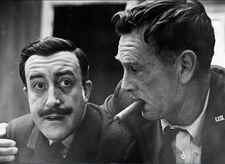 |
| Peter Sellers and Sterling Hayden in Dr. Strangelove Or: How I Learned To Stop Worrying And Love The Bomb |
GM: Oh my god, I want it!
AKT: I do, too.
GM: I’m frustrated not being in Tribeca, because it’s the second year and I still wasn’t able to come. I wish I could be there. I love New York. I have family there and come quite often. Tribeca to me is so prestigious. I hope I can physically come one day to Tribeca.
AKT: All the best with your next project!
Coming up - Gregory Monro on Eyes Wide Shut, Jack Nicholson or Al Pacino as Barry Lyndon versus Ryan O’Neal, Full Metal Jacket, The Aryan Papers, and Napoleon.





















